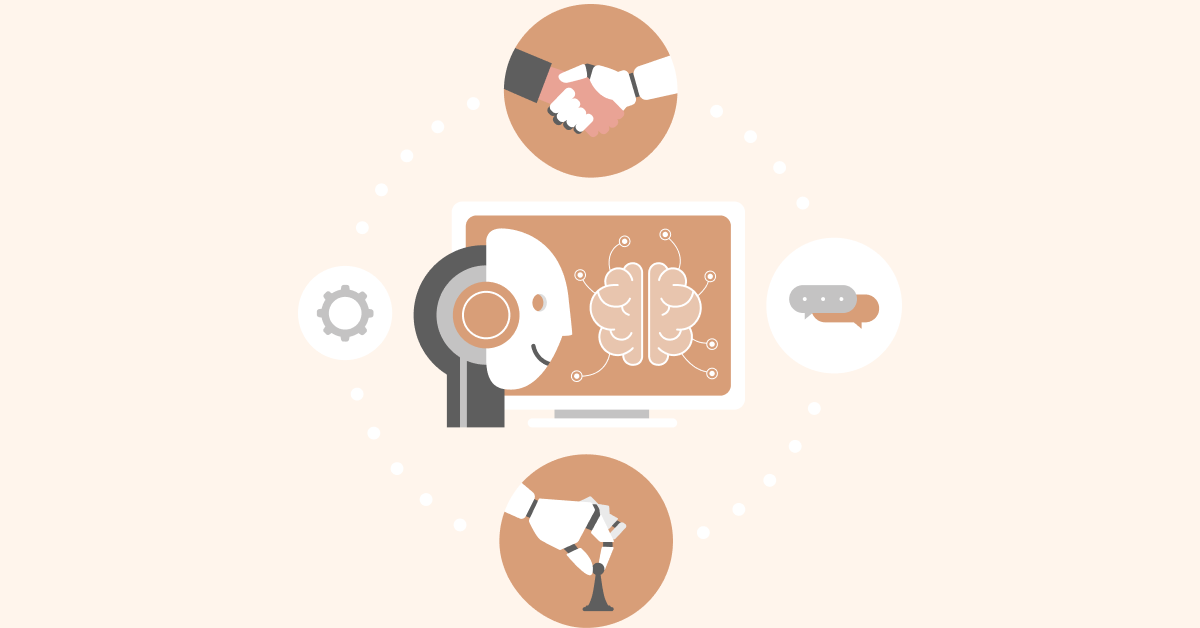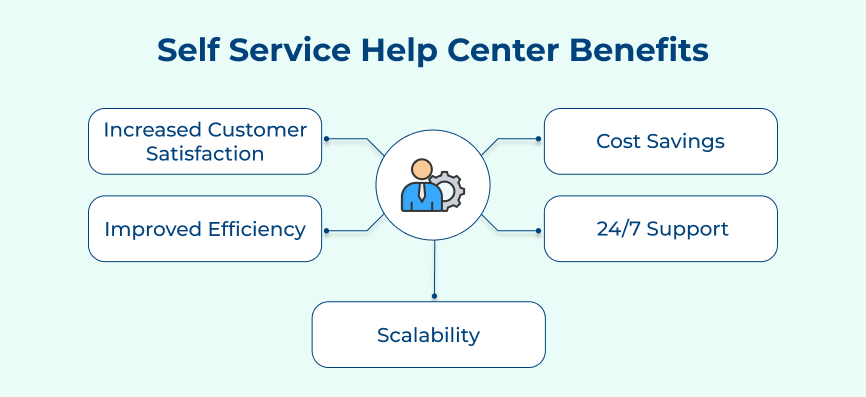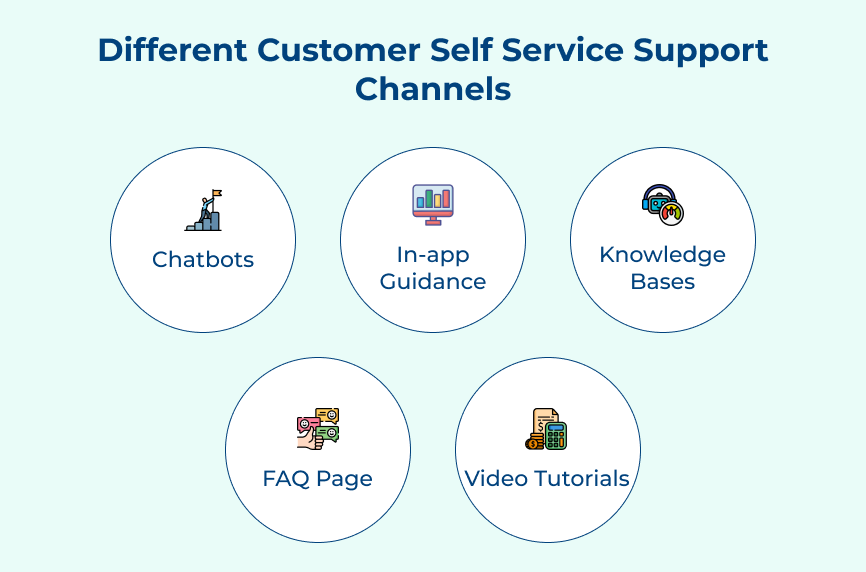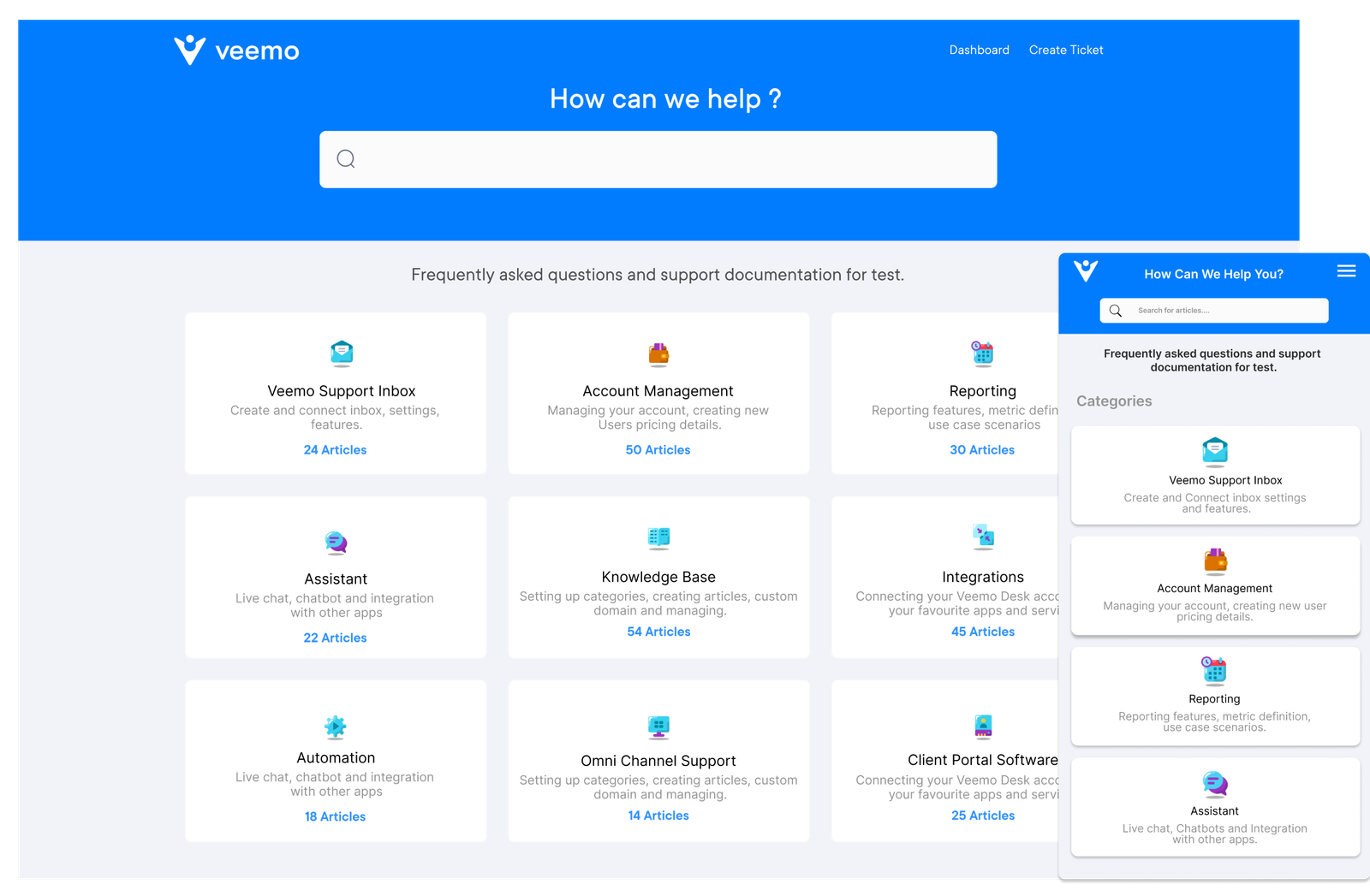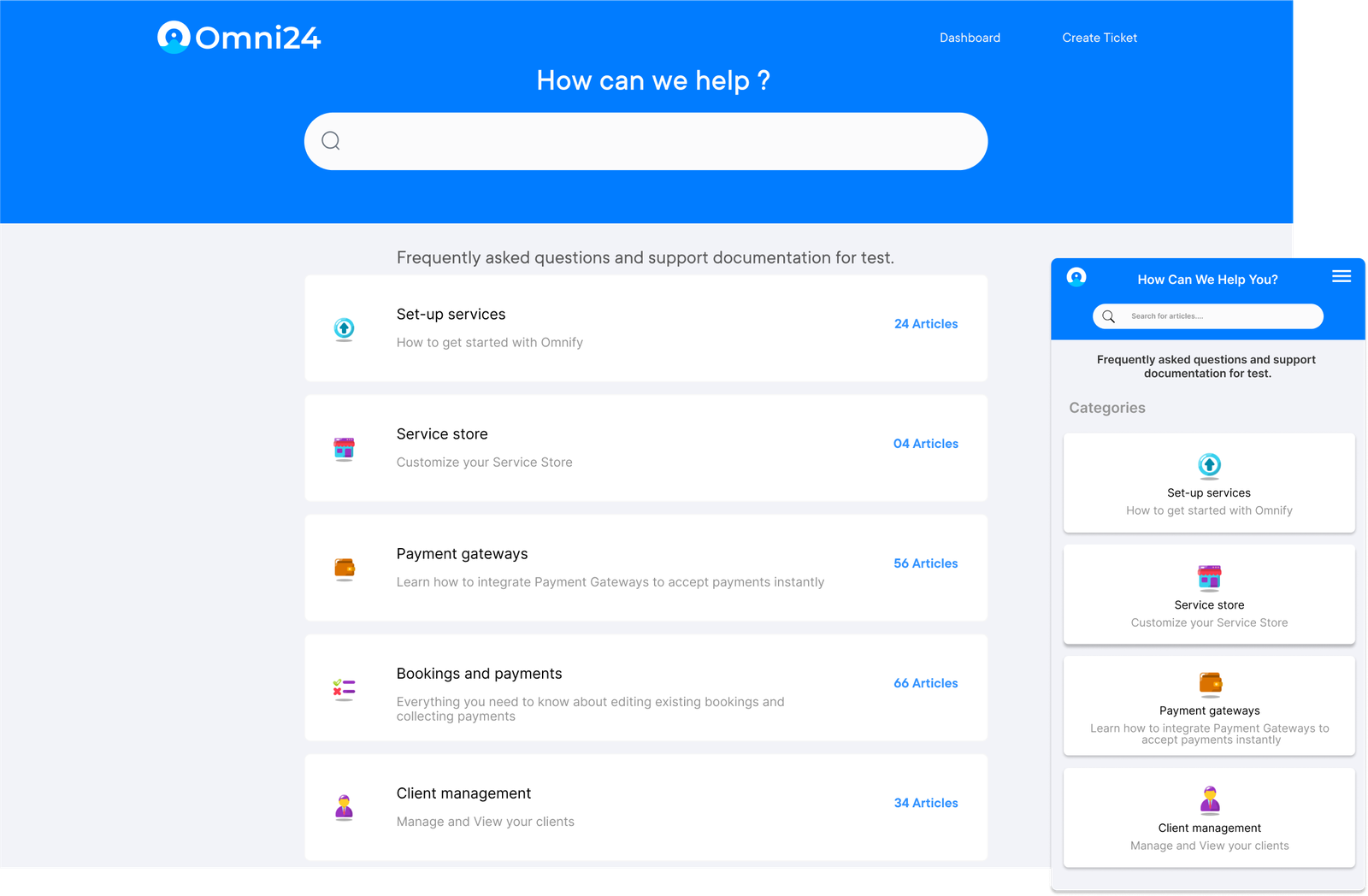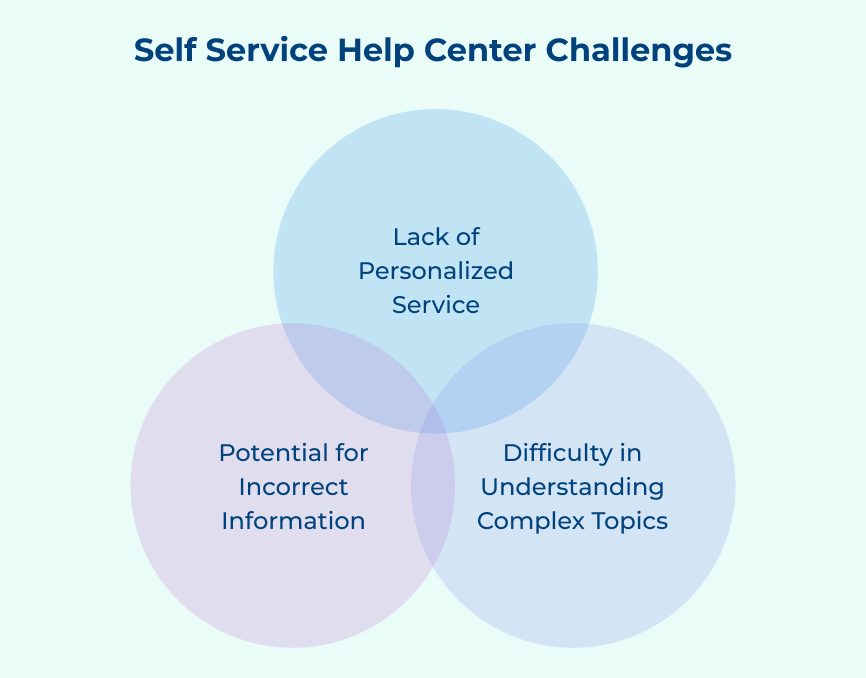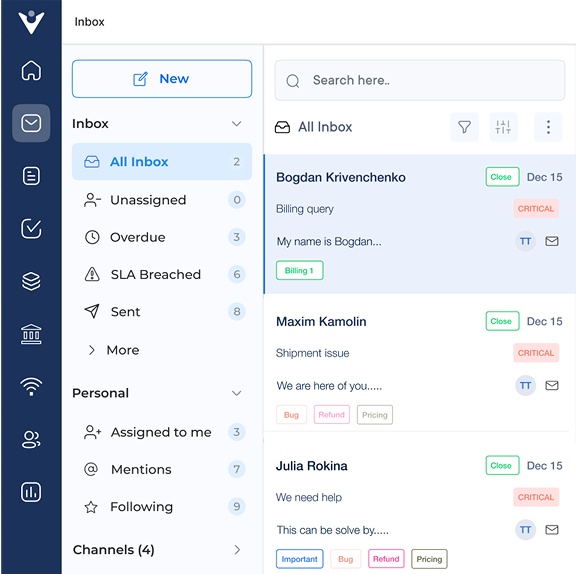1. Set Clear Goals
Setting clear goals is the first step in creating a service help center. This step is crucial because without clear goals, it can be difficult to know what businesses are trying to achieve with the help center. Setting clear goals helps to define the purpose and objectives of the help center. It allows one to focus on what is most important and prioritize tasks accordingly.
Businesses can measure the success of their help center and make adjustments as needed by establishing clear goals. Setting clear goals can help to determine what information and resources are needed to support the customers. Let’s consider a goal of reducing customer support tickets by 50%. The organization can customize its help center content to address common issues and provide solutions.
Ways to implement:
- Set targets such as increasing customer satisfaction or reducing response time.
- Ensure that the goals of the help center support the company’s mission and values.
- Review progress regularly and make adjustments to goals as needed to ensure success.
2. Define the Roles and Responsibilities
One crucial step in creating the best self service help center is defining the roles and responsibilities. It involves outlining who will be responsible for what tasks in managing and maintaining the help center. Defining roles and responsibilities is important because it ensures that tasks are properly delegated.
The absence of clearly defined roles may lead to confusion about who is supposed to handle specific tasks, leading to inefficiency and potential mistakes. Defining roles and responsibilities allows businesses to set the groundwork for a well-organized self service support center. Let’s take an example of an organization that may assign one team member to handle content creation. They assigned another to manage user inquiries and another to make improvements based on user interactions.
Ways to implement:
- Create a detailed job description for each role, outlining specific responsibilities and expectations.
- Hold regular team meetings to review progress, discuss any challenges and make decisions collaboratively.
- Provide training and resources to ensure that each team member is equipped to fulfill their role effectively.
3. Start Authoring
One crucial step in the process of creating self service help center portals is to start authoring content. It involves writing easy-to-understand articles, FAQs and guides that address common customer issues. Authoring content is important because it helps to populate the help center with relevant information that customers can easily access and find solutions to their problems.
The step plays a vital role in creating a self service support center as it is the foundation of providing valuable resources for customers to resolve their issues independently. One use case for authoring content could be a software company creating step-by-step guides on how to troubleshoot common technical issues.
Ways to implement:
- Conduct thorough research to understand the customer’s needs and pain points to create content that addresses specific issues.
- Use a user-friendly tone throughout the articles to ensure clarity and ease of understanding.
- Regularly update the content to keep it relevant and up-to-date with the latest trends in your industry.
4. Multimedia Can Be Magical
When businesses want to create self service help center models, it is essential to incorporate multimedia elements into the content. Multimedia such as videos, infographics or interactive tutorials can be magical in enhancing the user experience and providing clear, visual explanations of complex concepts. The importance of the step lies in the fact that different users have different learning styles and some may prefer visual or interactive content over text-based explanations.
Multimedia content can help create a more engaging and interactive self service support center. Users can watch videos or interact with interactive tutorials to quickly find solutions to their problems. It saves time for both and enhances the overall user experience. One use case for multimedia in a self serve help center is creating step-by-step video tutorials for common issues or tasks.
Ways to implement:
- Creating video tutorials for frequently asked questions or common tasks
- Designing interactive infographics to visually explain complex processes or concepts
- Adding screenshots or images to accompany text-based instructions for clarity and visual appeal.
5. Keep It Mobile-Friendly
Having a mobile-friendly help center provides convenience and accessibility for users who are on the go or prefer to access information on their mobile devices. It helps to create a seamless user experience and increases the likelihood of users finding the information they need quickly.
Let’s take the example of a customer trying to troubleshoot an issue with the product while they are out and about. A mobile-friendly help center would allow them to easily search for solutions and find the information they need to resolve the issue on their own, providing a positive customer experience.
Ways to implement:
- Ensure that the help center is responsive and adapts to different devices. It will provide a consistent user experience across all devices.
- Make sure that the content is easily readable on smaller screens and that images or videos are appropriately sized for mobile viewing.
- Regularly test the help center on various mobile devices to ensure that it is functioning correctly and providing a user-friendly experience for all users.
6. Leverage Employee Knowledge
When building a self service help center software, leveraging employee knowledge is a crucial step in ensuring the success of the platform. Employees are often the ones who have a deep understanding of the products, services and common issues faced by customers. Organizations can create a more comprehensive and effective help center by tapping into the knowledge.
The step is important because it allows companies to provide accurate and relevant information to customers, improving their overall experience. Utilizing employee knowledge allows organizations to address customer inquiries more efficiently and effectively, reducing the need for customers to reach out to support teams for help.
Ways to implement:
- Conduct employee training sessions to educate them on the importance of contributing their knowledge to the help center.
- Encourage employees to regularly update and add new content to the help center based on customer feedback.
- Implement a system for employees to easily share their insights and expertise with the help center team, such as a dedicated platform or channel for submitting suggestions.
7. Keep Your SEO Game on Point
During the self service help center implementation, it is crucial to keep the SEO game on point. Search Engine Optimization (SEO) is essential for ensuring that the help center content is easily discoverable by users searching for information online. Having strong SEO practices in place will not only increase the visibility of the help center but also drive more traffic to it.



